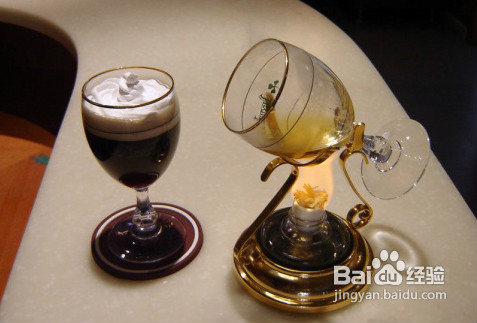Introduction to the characteristics of the manor producing area with a very strong flavor of Antigua coffee in Guatemala
From 1871 to 1944, the country began to devote itself to economic modernization. At the same time, the United Fruit Company, which is dominated by the United States, has also begun to buy large coffee and banana estates in Guatemala and intervene in Guatemalan politics. After the revolution in October 1944, the former dictator was overthrown, Guatemala implemented democracy and freedom of expression, and the first law in Guatemalan history to protect the interests of workers came into force. [7] Guatemala began the process of democratization. [1]
Between 1950 and 1954, the ruling president Jacobo Abens implemented land reform, when big landlords, who accounted for 2 per cent of the country's population, owned about 70 per cent of the country's arable land. Arbens wrote a check for land reform, promising to buy the land held by the big landlords and redistribute it to small farmers. Arbens won the election, and the land reform plan was carried out immediately. Landlords who own more than 223 acres of land will be expropriated as long as there is land not used for production. In the end, an average of 4300 acres of land was expropriated from 1059 farms, and about 100, 000 farmers were given ownership of the land. [7]
United Fruit has its largest estate in Guatemala, and it also owns medium
Guatemala
Guatemala
Inter-American Railway and the only seaport in Guatemala. Driven by the United Fruit Company, the US Ministry of Foreign Affairs began a propaganda war against Guatemala to crack down on the Arbens regime in the name of anti-communism. The Central Intelligence Agency, in cooperation with the opposition among Guatemalan soldiers, launched an operation called Operation PBSUCCESS. [7]
In 1954, Arbens was overthrown and Castillo Armas became the new dictator. The new government immediately invalidated all reforms. Enter the period of transition between the right-wing military government and the literati government. [1]
In 1957, Armas was assassinated and his heir was a soldier who was already known for his bloodshed in the dictatorship of the 1940s. [7]
In 1960, leftist military groups appeared in Guatemala. [1]
In 1982, the leftist guerrillas across the country merged to form the "National Revolutionary Alliance of Guatemala" and armed struggle spread throughout the country. Farmers dissatisfied with the overthrow of the Arbens regime organized a guerrilla group in which more than 100,000 people were killed and millions displaced. In September 1982, the persecution of the local Mayans by the Guatemalan army was close to genocide, and more than 9000 Mayans were killed. Since 1983, persecution on the part of the Government of Guatemala began to decrease and the country began to democratize again. However, the disparity between the rich and the poor has not been solved, and only a small number of people who account for 1% own more than 60% of the arable land and wealth. In 1985, Guatemala reorganized the general election. [7]
In December 1996, the Government of Arzu (National Vanguard Party) and the National Revolutionary Union of Guatemala reached a final Peace Agreement, which officially ended 36 years of civil strife in Guatemala.
Guatemala is located in the center of North and South America, and its geographical location occupies an important position in Central America. Guatemala covers an area of about 108899 square kilometers. The land features can be divided into plateau volcanoes, lowland tropical forests, volcanic sandy shore plains along the Pacific coast, and virgin lands along the Caribbean Sea. The SierraMadre Mountains of Central America, which straddles Guatemala from east to west, covers an area of about 2GP3 and has 34 volcanoes. In this country, rivers and lakes dot the landscape, while equatorial forests and plain jungles cover the land. There are also untapped volcanic beaches on the Pacific and Caribbean coasts.
The coffee produced in Guatemala is one of the top coffee in the world, because Guatemala is a high-altitude volcanic terrain, and these volcanoes are the ideal places to grow coffee. Compared with other varieties of coffee, critics prefer this mixed flavor coffee with spicy flavor. The extra hard coffee beans here are a rare good coffee with full grains, delicious taste and balanced acidity. In addition, its giant coffee beans have attracted a lot of attention in Guatemala.
Coffee was really introduced into Guatemala in 1750 by Father Jesuit, and the coffee industry was developed by German colonists at the end of the 19th century. Today, most of the coffee industry's production takes place in the south of the country. There are seven major coffee producing areas in Guatemala, and the flavor of coffee produced in each area is different, but to sum up, Guatemalan coffee shows a mild and mellow overall texture, elegant aroma, and special and pleasant acidity similar to fruit acid, becoming the aristocrat of coffee, among which Antigua Classic Coffee (AntiguaClassic) is highly recommended by global coffee connoisseurs.
Antigua is the oldest and most beautiful city in America. As early as 1543, Antigua was the capital of all colonial times in Central America, and the Government House of Spain was also set up here. The whole city of Antigua was destroyed after the great earthquake of 1773, so the capital was moved to Guatemala City. Antigua is about 40 kilometers west of Guatemala City. Colonial buildings were damaged by the earthquake, and the whole remains after the earthquake is a living museum of history.

Important Notice :
前街咖啡 FrontStreet Coffee has moved to new addredd:
FrontStreet Coffee Address: 315,Donghua East Road,GuangZhou
Tel:020 38364473
- Prev

Mild flavor of Costa Rica Saint Roman Coffee Manor flavor and taste characteristics of boutique coffee beans
The Supreme Court is the highest judicial body, composed of 22 judges for a term of eight years. At the end of his term of office, he or she may be automatically re-elected if there is no objection from the members of Parliament. There are four courts, the first, second and third tribunals are each composed of five judges, and the fourth court (Constitutional Court) is composed of seven judges and has the final power to interpret the Constitution. The Chief Justice shall be appointed by the Legislative Assembly for a term of eight years and may be re-elected. Highest
- Next

Bright taste introduction to the flavor and taste of Cupid Coffee Manor in Panama
When the commodity price of coffee was relatively low, the Panamanian Fine Coffee Association organized a competition called Best Panama: coffee beans from different parts of Panama were ranked and auctioned online. Esmeralda Manor has been growing a kind of coffee called Geisha for many years, and the auction has made their coffee known to more people. After that
Related
- Detailed explanation of Jadeite planting Land in Panamanian Jadeite Manor introduction to the grading system of Jadeite competitive bidding, Red bid, Green bid and Rose Summer
- Story of Coffee planting in Brenka region of Costa Rica Stonehenge Manor anaerobic heavy honey treatment of flavor mouth
- What's on the barrel of Blue Mountain Coffee beans?
- Can American coffee also pull flowers? How to use hot American style to pull out a good-looking pattern?
- Can you make a cold extract with coffee beans? What is the right proportion for cold-extracted coffee formula?
- Indonesian PWN Gold Mandrine Coffee Origin Features Flavor How to Chong? Mandolin coffee is American.
- A brief introduction to the flavor characteristics of Brazilian yellow bourbon coffee beans
- What is the effect of different water quality on the flavor of cold-extracted coffee? What kind of water is best for brewing coffee?
- Why do you think of Rose Summer whenever you mention Panamanian coffee?
- Introduction to the characteristics of authentic blue mountain coffee bean producing areas? What is the CIB Coffee Authority in Jamaica?

